Technology
What’s the minimum viable infrastructure your enterprise needs for AI?
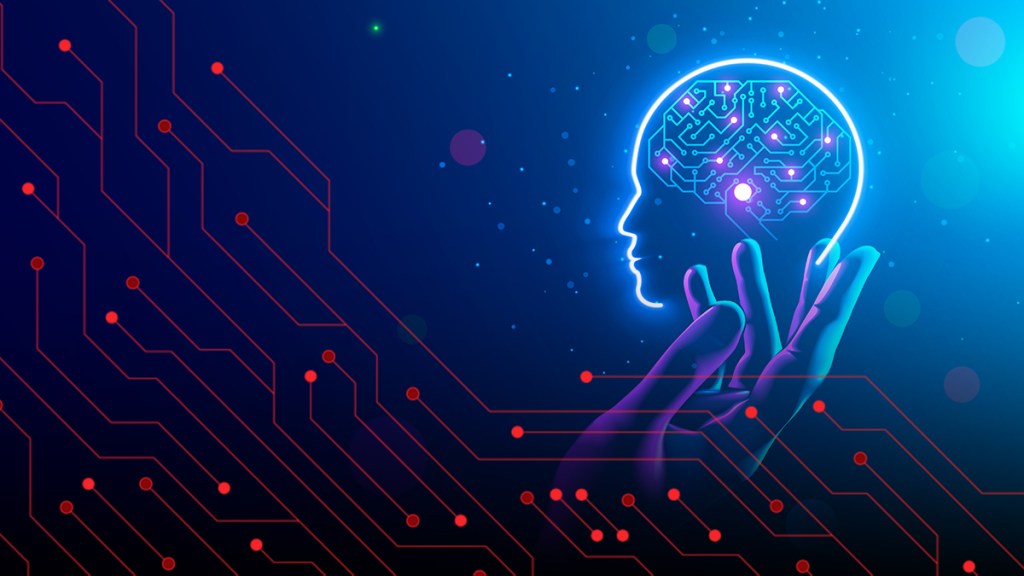
Join our daily and weekly newsletters for the latest updates and exclusive content on industry-leading AI coverage. Learn More
This article is part of a VB Special Issue called “Fit for Purpose: Tailoring AI Infrastructure.” Catch all the other stories here.
As we approach the midpoint of the 2020s decade, enterprises of all sizes and sectors are increasingly looking at how to adopt generative AI to increase efficiencies and reduce time spent on repetitive, onerous tasks.
In some ways, having some sort of generative AI application or assistant is rapidly moving from becoming a “nice to have” to a “must have.”
But what is the minimum viable infrastructure needed to achieve these benefits? Whether you’re a large organization or a small business, understanding the essential components of an AI solution is crucial.
This guide — informed by leaders in the sector including experts at Hugging Face and Google — outlines the key elements, from data storage and large language model (LLM) integration to development resources, costs and timelines, to help you make informed decisions.
>>Don’t miss our special issue: Fit for Purpose: Tailoring AI Infrastructure.<<
Data storage and data management
The foundation of any effective gen AI system is data — specifically your company’s data, or at least, data that is relevant to your firm’s business and/or goals.
Yes, your business can immediately use off-the-shelf chatbots powered by large language models (LLMs) such as Google’s Gemini, OpenAI’s ChatGPT, Anthropic Claude or other chatbots readily available on the web — which may assist with specific company tasks. And it can do so without inputting any company data.
However, unless you feed these your company’s data — which may not be allowed due to security concerns or company policies — you won’t be able to reap the full benefits of what LLMs can offer.
So step one in developing any helpful AI product for your company to use, internally or externally, is understanding what data you have and can share with an LLM, whether that be a public or private one you control on your own servers and where it is located. Also whether it is structured or unstructured.
Structured data is organized typically in databases and spreadsheets, with clearly defined fields like dates, numbers and text entries. For instance, financial records or customer data that fit neatly into rows and columns are examples of structured data.
Unstructured data, on the other hand, lacks a consistent format and is not organized in a predefined manner. It includes various types of content like emails, videos, social media posts and documents, which do not fit easily into traditional databases. This type of data is more challenging to analyze due to its diverse and non-uniform nature.
This data can include everything from customer interactions and HR policies to sales records and training materials. Depending on your use case for AI — developing products internally for employees or externally for customers — the route you go will likely change.
Let’s take a hypothetical furniture maker — the “Chair Company” — that makes chairs for consumers and businesses out of wood.
This Chair Company wants to create an internal chatbot for employees to use that can answer common questions such as how to file expenses, how to request time off and where files for building chairs are located.
The Chair Company may in this case already have these files stored on a cloud service such as Google Cloud, Microsoft Azure or AWS. For many businesses, integrating AI capabilities directly into existing cloud platforms can significantly simplify the deployment process.
Google Workspace, combined with Vertex AI, enables enterprises to leverage their existing data across productivity tools like Docs and Gmail.
A Google spokesperson explained to VentureBeat, “With Vertex AI’s Model Garden, businesses can choose from over 150 pre-built models to fit their specific needs, integrating them seamlessly into their workflows. This integration allows for the creation of custom agents within Google Workspace apps, streamlining processes and freeing up valuable time for employees.”
For example, Bristol Myers Squibb used Vertex AI to automate document processes in their clinical trials, demonstrating how powerful these integrations can be in transforming business operations. For smaller businesses or those new to AI, this integration provides a user-friendly entry point to harness the power of AI without extensive technical overhead.
But what if the company has data stored only on an intranet or local private servers? The Chair Company — or any other in a similar boat — can still leverage LLMs and build a chatbot to answer company questions. However, they will likely want to deploy one of many open-source models available from the coding community Hugging Face instead.
“If you’re in a highly regulated industry like banking or healthcare, you might need to run everything in-house,” explained Jeff Boudier, head of product and growth at Hugging Face, in a recent interview with VentureBeat. “In such cases, you can still use open-source tools hosted on your own infrastructure.”
Boudier recorded the following demo video for VentureBeat showing how to use Hugging Face’s website and available models and tools to create an AI assistant for a company.
A Large Language Model (LLM)
Once you’ve determined what company data you can and want to feed into an AI product, the next step is selecting which large language model (LLM) you wish to power it.
Choosing the right LLM is a critical step in building your AI infrastructure. LLMs such as OpenAI’s GPT-4, Google’s DialogFlow, and the open models hosted on Hugging Face offer different capabilities and levels of customization. The choice depends on your specific needs, data privacy concerns and budget.
Those charged with overseeing and implementing AI integration at a company will need to assess and compare different LLMs, which they can do using websites and services such as the LMSYS Chatbot Arena Leaderboard on Hugging Face.
If you go the route of a proprietary LLM such as OpenAI’s GPT series, Anthropic’s Claude family or Google’s Gemini series, you’ll need to find and plug the LLM into your database via the LLM provider’s private application programming interface (API).
Meanwhile, if the Chair Company or your business wants to host a model on its own private infrastructure for enhanced control and data security, then an open-source LLM is likely the way to go.
As Boudier explains, “The main benefit of open models is that you can host them yourself. This ensures that your application’s behavior remains consistent, even if the original model is updated or changed.”
Already, VentureBeat has reported on the growing number of businesses adopting open source LLMs and AI models from the likes of Meta’s Llama and other providers and independent developers.
Retrieval-Augmented Generation (RAG) framework
For a chatbot or AI system to provide accurate and relevant responses, integrating a retrieval augmented generation (RAG) framework is essential.
This involves using a retriever to search for relevant documents based on user queries and a generator (an LLM) to synthesize the information into coherent responses.
Implementing an RAG framework requires a vector database like Pinecone or Milvus, which stores document embeddings—structured representations of your data that make it easy for the AI to retrieve relevant information.
The RAG framework is particularly useful for enterprises that need to integrate proprietary company data stored in various formats, such as PDFs, Word documents and spreadsheets.
This approach allows the AI to pull relevant data dynamically, ensuring that responses are up-to-date and contextually accurate.
According to Boudier, “Creating embeddings or vectorizing documents is a crucial step in making data accessible to the AI. This intermediate representation allows the AI to quickly retrieve and utilize information, whether it’s text-based documents or even images and diagrams.”
Development expertise and resources
While AI platforms are increasingly user-friendly, some technical expertise is still required for implementation. Here’s a breakdown of what you might need:
- Basic Setup: For straightforward deployment using pre-built models and cloud services, your existing IT staff with some AI training should suffice.
- Custom Development: For more complex needs, such as fine-tuning models or deep integration into business processes, you’ll need data scientists, machine learning engineers, and software developers experienced in NLP and AI model training.
For businesses lacking in-house resources, partnering with an external agency is a viable option. Development costs for a basic chatbot range from $15,000 to $30,000, while more complex AI-driven solutions can exceed $150,000.
“Building a custom AI model is accessible with the right tools, but you’ll need technical expertise for more specialized tasks, like fine-tuning models or setting up a private infrastructure,” Boudier noted. “With Hugging Face, we provide the tools and community support to help businesses, but having or hiring the right talent is still essential for successful implementation.”
For businesses without extensive technical resources, Google’s AppSheet offers a no-code platform that allows users to create custom applications by simply describing their needs in natural language. Integrated with AI capabilities like Gemini, AppSheet enables rapid development of tools for tasks such as facility inspections, inventory management and approval workflows—all without traditional coding skills. This makes it a powerful tool for automating business processes and creating customized chatbots.
Time and budget considerations
Implementing an AI solution involves both time and financial investment. Here’s what to expect:
- Development Time: A basic chatbot can be developed in 1-2 weeks using pre-built models. However, more advanced systems that require custom model training and data integration may take several months.
- Cost: For in-house development, budget around $10,000 per month, with total costs potentially reaching $150,000 for complex projects. Subscription-based models offer more affordable entry points, with costs ranging from $0 to $5,000 per month depending on features and usage.
Deployment and maintenance
Once developed, your AI system will need regular maintenance and updates to stay effective. This includes monitoring, fine-tuning and possibly retraining the model as your business needs and data evolve. Maintenance costs can start at $5,000 per month, depending on the complexity of the system and the volume of interactions.
If your enterprise operates in a regulated industry like finance or healthcare, you may need to host the AI system on private infrastructure to comply with data security regulations. Boudier explained, “For industries where data security is paramount, hosting the AI model internally ensures compliance and full control over data and model behavior.”
Final takeaways
To set up a minimum viable AI infrastructure for your enterprise, you need:
- Cloud Storage and Data Management: Organize and manage your data efficiently using an intranet, private servers, private clouds, hybrid clouds or commercial cloud platforms like Google Cloud, Azure or AWS.
- A Suitable LLM: Choose a model that fits your needs, whether hosted on a cloud platform or deployed on private infrastructure.
- A RAG Framework: Implement this to dynamically pull and integrate relevant data from your knowledge base.
- Development Resources: Consider in-house expertise or external agencies for building, deploying, and maintaining your AI system.
- Budget and Time Allocation: Prepare for initial costs ranging from $15,000 to $150,000 and development time of a few weeks to several months, depending on complexity.
- Ongoing Maintenance: Regular updates and monitoring are necessary to ensure the system remains effective and aligned with business goals.
By aligning these elements with your business needs, you can create a robust AI solution that drives efficiency, automates tasks, and provides valuable insights—all while maintaining control over your technology stack.
Source link
Technology
Tech Life: Will AI replace call centre workers?
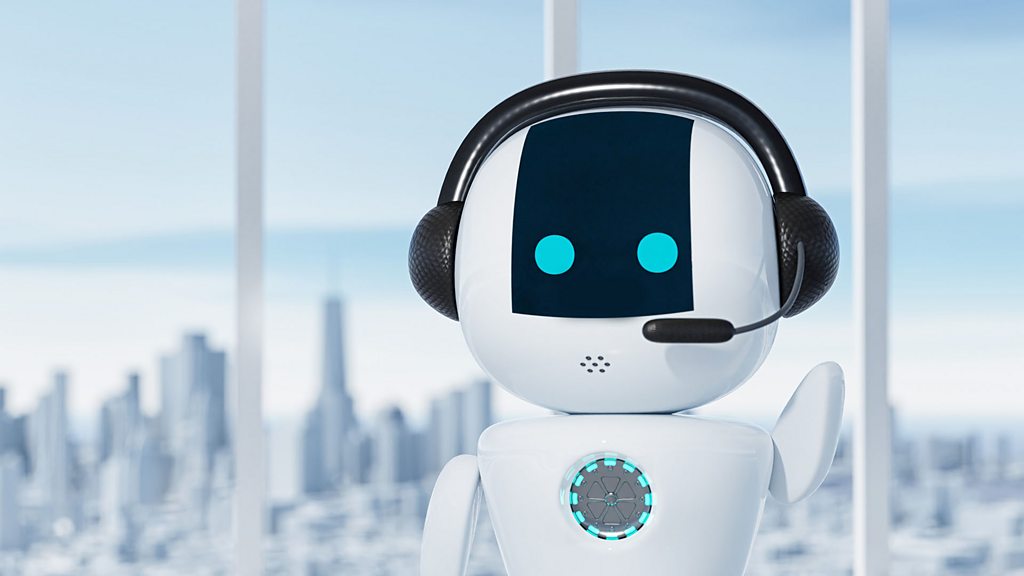
We speak to the man who says AI will create call centre jobs – rather than replace them.
Servers computers
Get Refurbished HP Gen 6 Rack Servers At Best Price | Check Specification
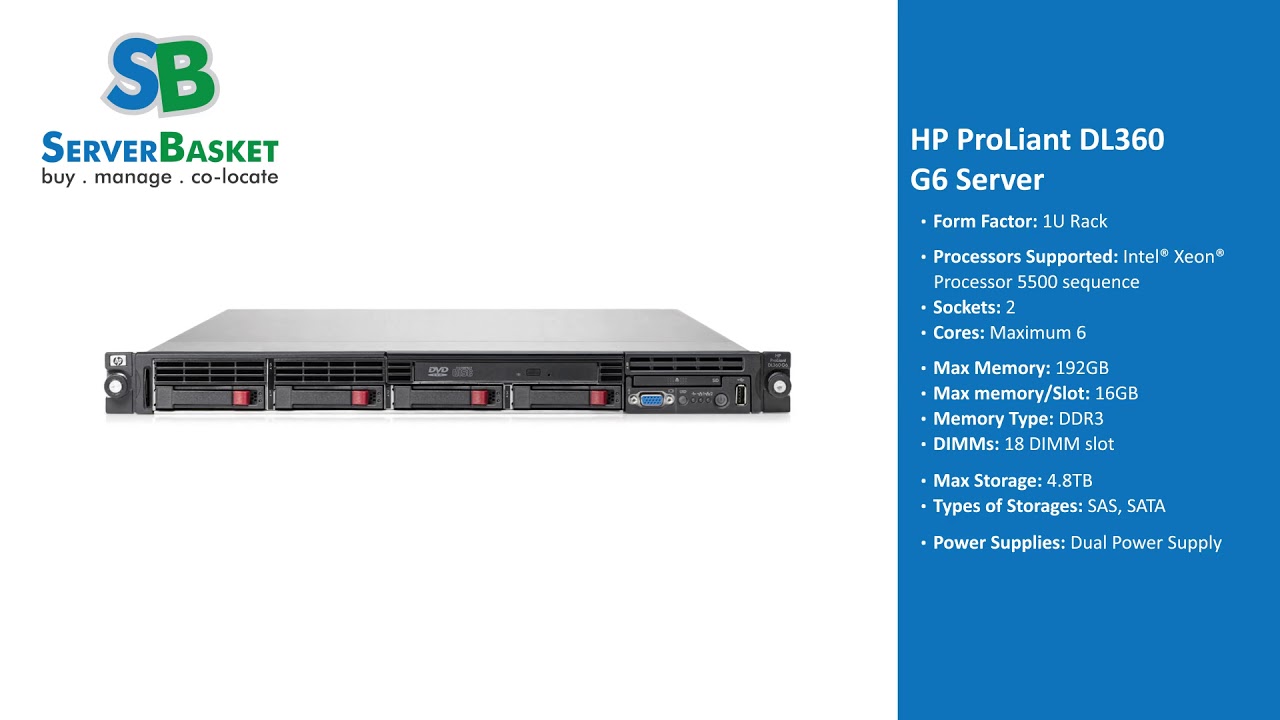
For Complete Information on Any of the HP Refurb Gen 6 Rack Server, Please Contact Us At
Website: https://www.serverbasket.com
Email: Sales@serverbasket.com
Toll Free No: 1800 133 1346
Whatsapp: +91 8886001858
Try Refurbished HP Gen 6 Rack Servers which can be scaled according to your work demands. Excellent choice for startups with budget constraints and limited space. We customize to cost optimize your refurb HP rack server.
Boost your business by investing less and gaining more. Get Prompt Support from Server Basket 24/7 giving you peace of mind and security for your precious data.
Check the list of HP Gen 6 Rack Servers and Select The Best one That Suits Your Growing Business Needs.
1)HP ProLiant DL120 Gen6 Rack Server
Form Factor: 1U
Processors Supported: Intel® Xeon® processor X3400 series
Sockets: 1
Cores: Maximum 4
Max Memory: 16GB
Max memory/Slot: 2GB
Memory Type:DDR3
DIMMs: 6 DIMM slots
Max Storage: 8TB
Types of Storages:SATA,SAS
Power Supplies: Dual Power Supply
Warranty: 3 Months
———————————
2)HP ProLiant DL160 Generation 6
Form Factor: 1U
Processors Supported: Intel® E5530 and X5560 processors
Sockets: 1
Cores: Maximum 6
Max Memory:288 GB
Max memory/Slot: 16 GB
Memory Type:DDR3
DIMMs: 18 DIMM slots
Max Storage: 12.0TB
Types of Storages: LFF SATA, LFF SATA,LFF SATA SSD, LFF SAS, SFF SATA, SFF SATA SSD, SFF SAS, SAS SSD
Power Supplies: Dual Power Supply
Warranty: 3 Months
———————————
3)HP ProLiant DL165 Generation 6
Form Factor: 1U
Processors Supported:AMD Opteron 2400 series processors
Sockets: 2
Cores: Maximum 6
Max Memory:64 GB
Max memory/Slot: 8 GB
Memory Type:DDR3
DIMMs: 8 DIMM slots
Max Storage: 8.0TB
Types of Storages: LFF SATA, LFF SATA,LFF SATA SSD, LFF SAS, SFF SATA, SFF SATA SSD, SFF SAS, SAS SSD
Power Supplies: Dual Power Supply
Warranty: 3 Months
———————————
4)HP ProLiant DL180 Generation 6
Form Factor: 2U
Processors Supported: Intel® Xeon® processors: 5500 s
Sockets: 2
Cores: Maximum 6
Max Memory:192 GB
Max memory/Slot:16 GB
Memory Type:DDR3
DIMMs: 12 DIMM slots
Max Storage:12.5TB
Types of Storages:SATA,SAS,SATA,SAS
Power Supplies: Dual Power Supply
Warranty: 3 Months
———————————
5)HP ProLiant DL320 Generation 6
Form Factor: 2U
Processors Supported: Intel Xeon Processor 5600 Series
Sockets: 2
Cores: Maximum 6
Max Memory:144 GB
Max memory/Slot: 16 GB
Memory Type:DDR3
DIMMs: 9 DIMM slots
Max Storage:12.5TB
Types of Storages:LFF SATA,LFF SAS ,SFF SATA, SAS,LFF SATA SSD, SFF SATA SSD
Power Supplies: Dual Power Supply
Warranty: 3 Months
——————–
6)HP ProLiant DL360 Generation 6
Form Factor: 1U
Processors Supported: Intel® Xeon® processor 5500 sequence
Sockets: 2
Cores: Maximum 6
Max Memory:192GB
Max memory/Slot:16GB
Memory Type:DDR3
DIMMs:18 DIMM slot
Max Storage:4.8TB
Types of Storages: SAS, SATA
Power Supplies: Dual Power Supply
Warranty: 3 Months
———————————
7)HP ProLiant DL370 Generation 6
Form Factor: 4U rack
Processors Supported: Intel® Xeon® 5500 series processors
Sockets: 2
Cores: Maximum 12
Max Memory:384GB
Max memory/Slot:32GB
Memory Type:DDR3
DIMMs: 12 DIMM slots
Max Storage:42TB
Types of Storages:SFF SAS,LFF SAS,SFF SAS SSD,SFF SATA SSD,LFF SATA SSD
Power Supplies: Dual Power Supply
Warranty: 3 Months
———————————
8)HP ProLiant DL380 Generation 6
Form Factor: 2U rack
Processors Supported: Intel® Xeon® 5500 series
Sockets: 2
Cores: Maximum 16
Max Memory:192 GB
Max memory/Slot:16 GB
Memory Type:DDR3
DIMMs: 18 DIMM slots
Max Storage:12TB
Types of Storages:SFF SAS,LFF SAS
Power Supplies: Dual Power Supply
Warranty: 3 Months
———————————
9)HP ProLiant DL385 G6 Server
Form Factor: 2U rack
Processors Supported: AMD Opteron™ 2400 Series
Sockets: 2
Cores: Maximum 12
Max Memory:128 GB
Max memory/Slot:8 GB
Memory Type:DDR3
DIMMs: 16 DIMM slots
Max Storage:12TB
Types of Storages:SFF SAS,LFF SAS
Power Supplies: Dual Power Supply
Warranty: 3 Months
———————————
And many More HP Gen 6 Rack Servers are Available at Server Basket for the Lowest Market Price to Ease YOUR IT Budget. .
source
Science & Environment
Queen guitarist Brian May quits as VP over food label

 PA Media
PA MediaQueen guitarist Sir Brian May has quit as the RSPCA’s vice-president over what he called “damning evidence” of animal welfare failings related to its food certification label.
BBC News reported on Thursday that the association had to run spot checks on more than 200 ‘RSPCA Assured’ farms to ensure they met its own standards.
Animal welfare activists say their own undercover investigations found the scheme covering around 4,000 farms was failing to ensure even basic legal standards. They also want RSPCA president Chris Packham to stand down.
The RSPCA said it had “different views from Brian on how best to approach this complex challenge”.
The BBC has reached out to conservationist and TV presenter Mr Packham for comment.

Sir Brian, who has long campaigned on animal welfare issues and against the culling of badgers to protect farms from bovine TB, published his letter of resignation on Instagram.
In it, he said: “It is with profound sadness and not without massive soul-searching that today I have to offer my resignation as a vice-president of the RSPCA.”
He said he had been kept informed “of complaints that have been levelled in recent months at the RSPCA over appallingly bad standards of animal welfare in member farms of the RSPCA Assured scheme.
“I have understood that the RSPCA needed time to evaluate the evidence and make decisions on action to be taken.
 Getty Images
Getty Images“But as more and more damning evidence comes to light, I find the RSPCA’s response completely inadequate.”
He added that as the supervision of the scheme had “failed”, it needed to be dismantled.
Allegations against around 40 farms in the RSPCA Assured scheme that were investigated by animal welfare activists included overcrowding, poor hygiene and in some cases, physical abuse of livestock by farm workers.
Chris Packham has also called for the scheme to be suspended but has not yet commented on his future in the role.
Claire Palmer, director of Animal Justice Project, one of 60 groups that sent an open letter on Thursday calling for the scheme to be abandoned, told the BBC that they were “relieved that Brian May has made the responsible decision to step down as Vice President”.
‘Robust action’
“Years of undercover investigations have revealed the systemic failures of the RSPCA Assured scheme. The RSPCA must be bold and take decisive action now,” she added.
The RSPCA Assured scheme – originally known as Freedom Food – was launched 30 years ago and covers meat, fish, eggs and dairy. Certified farms have to follow strict welfare standards that are set out by RSPCA welfare scientists and are higher than is legally required in the UK.
An RSPCA spokeswoman said it respects Sir Brian’s “views and understands his decision” before adding: “His ongoing and devoted work campaigning on issues such as the badger cull and hunting have been invaluable for all animals and we look forward to speaking up on these issues with him in the future.”
The spokeswoman also called farming “hard, and farmed animal welfare is even harder”.
But, she added, the RSPCA wanted to “give our supporters, partners and the public confidence that RSPCA Assured is consistently delivering better welfare than standard farming practices.
“So, we launched an independent review of RSPCA Assured, which has been carried out over several months, including unannounced visits to more than 200 members of the scheme.
“Once we have analysed our findings, we will take any robust action necessary.”
Technology
2073 review: Samantha Morton stars in dystopian docudrama 2073


Ghost (Samantha Morton) narrates the dystopian history of New San Francisco
Neon
2073
Asif Kapadia
To be screened during the BFI London Film Festival, 16 October; wider distribution to be announced
2073 is definitely one of a kind. Asif Kapadia’s new feature premiered at the Venice Film Festival earlier this month and includes elements of documentary, drama, sci-fi and horror. First, he throws us into the dystopian city of New San Francisco, where we find out the world of 2073 has been devastated by some unspecified catastrophe known as the Event – most likely prompted by climate change – sometime in the 2040s.…
Servers computers
SYSRACKS Server Cabinet 32U-42U on Wheels

Portable models of server furniture are in great demand since easy and harmless moving or transportation is guaranteed.
About SYSRACKS Portable Cabinets
A network rack on wheels allows accommodating high-precious computing equipment and keeping it safe while transportation. Several models of different dimensions are offered in our catalog.
Since multiple options are offered on the website, customers can find a server rack on wheels of the desired height, ranging between 6U to 18U.
According to furniture depth, three types of cabinets are available. These are models of 350, 500, and 600 mm depth.
Benefits of SYSRACKS Server Cabinet on Wheels
– The main feature of such models is that they are equipped with special wheels that withstand high loads.
– A server cabinet on wheels is protected from outside access by special locks and latches.
– High-quality fasteners ensure construction rigidity.
– Perforated doors provide sufficient air circulation and improve natural ventilation;
– A closed furniture type provides a high level of security since only authorized system administrators have access to the devices housed inside the cabinet.
If you have any questions, want to order a quality server cabinet, or look through the assortment of furniture, visit our website https://sysracks.com/. You can also get in touch with our managers via e-mail: info@sysracks.com, and phone: +1 (514) 660-6333. They will help you choose the most appropriate option for your needs.
source
Technology
Every iPhone release in chronological order: 2007-2024
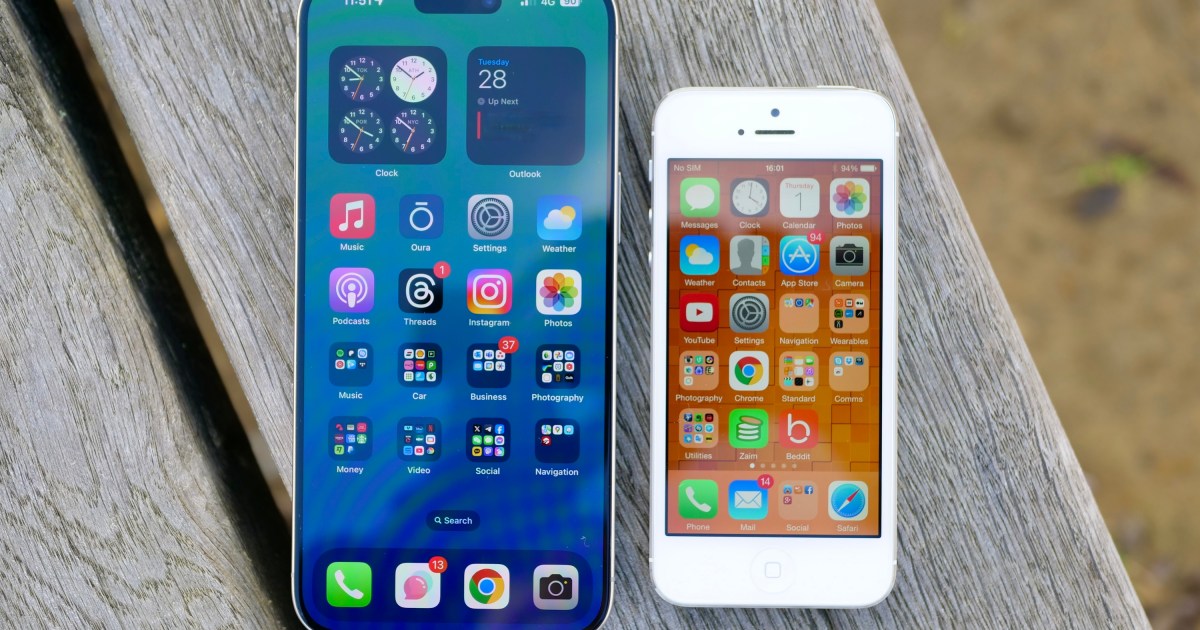
On January 9, 2007, Steve Jobs took the stage at Macworld and announced Apple’s next big product: the iPhone. Sales of the iPhone began on June 29, 2007, and it completely changed the world of mobile phones.
Now, in 2024, we’ve had over 17 years of iPhone releases. In just a few more years, it will be two decades of the iPhone, which is a little crazy to think about.
Let’s take a look back at every iPhone release in order, what made them special, and how we got to where we are today with the iPhone 16.
Every iPhone release in order
| iPhone model | Release date |
| iPhone | June 29, 2007 |
| iPhone 3G | July 11, 2008 |
| iPhone 3GS | June 19, 2009 |
| iPhone 4 | June 24, 2010 |
| iPhone 4S | October 14, 2011 |
| iPhone 5 | September 21, 2012 |
| iPhone 5S & 5C | September 20, 2013 |
| iPhone 6 and 6 Plus | September 19, 2014 |
| iPhone 6S and 6S Plus | September 25, 2015 |
| iPhone SE | March 31, 2016 |
| iPhone 7 and 7 Plus | September 16, 2016 |
| iPhone 8 and 8 Plus | September 22, 2017 |
| iPhone X | November 3, 2017 |
| iPhone XS / XS Max | September 21, 2018 |
| iPhone XR | October 26, 2018 |
| iPhone 11 | September 20, 2019 |
| iPhone SE 2 | April 24, 2020 |
| iPhone 12 | October 23, 2020 |
| iPhone 13 | September 24, 2021 |
| iPhone SE 3 | March 18, 2022 |
| iPhone 14 | September 16, 2022 |
| iPhone 15 | September 22, 2023 |
| iPhone 16 | September 20, 2024 |
iPhone (June 2007)

The original iPhone was the one that started it all and changed the mobile industry as we know it. Jobs said that the iPhone was three products: a widescreen iPod with touch controls, a revolutionary mobile phone, and a breakthrough internet communications device. An iPod, a phone, and an internet communicator. All in a single device. Do you get it?
At the time, the iPhone only had a 3.5-inch display, a 2-megapixel camera, and maxed-out storage of 16GB with only 128MB of RAM. You couldn’t copy and paste text, there was no MMS support, and you only had web apps, not native third-party apps. Plus, the iPhone was exclusive to AT&T (formerly Cingular) at this time, so if you wanted an iPhone, it had to be with only that carrier.
The original iPhone is lacking by today’s standards, but back then, it was revolutionary. Most other cell phones still had physical keyboards and keypads. Touchscreens were nowhere near as popular back in the day. Some tech CEOs, such as Steve Balmer, mocked Apple for creating the iPhone and didn’t think it would succeed. Well, the joke’s on them.
iPhone 3G (July 2008)

In July 2008, Apple followed up the original iPhone with the iPhone 3G. Similar to its predecessor, it had a 3.5-inch display, 2MP camera, 128MB of RAM, and up to 16GB of storage.
But as the name suggests, this version of the iPhone added 3G connectivity (the original iPhone only supported Edge speeds) and introduced the App Store, where users could download native apps from third-party developers.
Though these were pretty iterative additions by today’s standards, the launch of the App Store was actually huge. This began the whole “there’s an app for that” era and changed how all of us use our iPhones.
iPhone 3GS (June 2009)

When Apple introduced the App Store in 2008, it changed how people use their iPhones. The old maximum storage of 16GB just wasn’t going to cut it anymore, so Apple increased the specs on the iPhone 3GS, which came out in June 2009.
The iPhone 3GS increased the storage to 32GB, and the RAM went up to 256MB. This doubled the storage and RAM of the original iPhone and even the iPhone 3G to make room for all of the cool apps you could now download from the App Store.
Not only did the iPhone 3GS get more internal storage and RAM, but it even improved the camera. Apple upgraded the camera to a 3MP autofocus camera, which resulted in better-looking photos than its predecessors. There was also a new built-in digital compass and even the introduction of new accessibility features like VoiceOver.
iPhone 4 (June 2010)
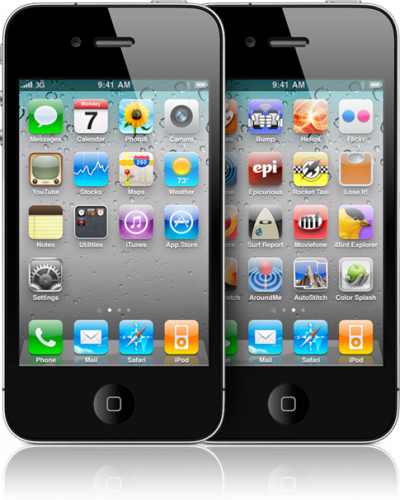
The iPhone 4 was a monumental step for the future of the iPhone. Though it retained the same 3.5-inch display as before, Apple upgraded the screen to a Retina display, which had a whopping 326 pixels per inch (ppi) density. At this high resolution, the human eye is unable to distinguish individual pixels on the screen. It was a drastic upgrade from the previous iterations of the iPhone and set the stage for Apple to add Retina displays to all of its other products eventually.
But that wasn’t the only major feature of the iPhone 4. Apple also added a front-facing camera for the first time, making it possible to have video calls on a mobile device. It also made selfies a thing. The rear camera got an improved 5MP lens with LED flash and became a gold standard for mobile photography.
This was also the first big hardware design change for the iPhone. While the first three versions were fairly rounded and made with plastic, the iPhone 4 moved to a new glass and stainless steel design with flat edges that we still see today.
However, the antenna design with the metal frame seemed to affect the signal when held in the left hand, leading to the first major iPhone scandal, dubbed “antennagate.” Jobs claimed users were “holding it wrong,” but eventually relented and offered free bumper cases for everyone to rectify the issue.
The iPhone 4 was also the first iPhone that became available on Verizon with its CDMA network, as it was no longer an AT&T exclusive.
iPhone 4S (October 2011)
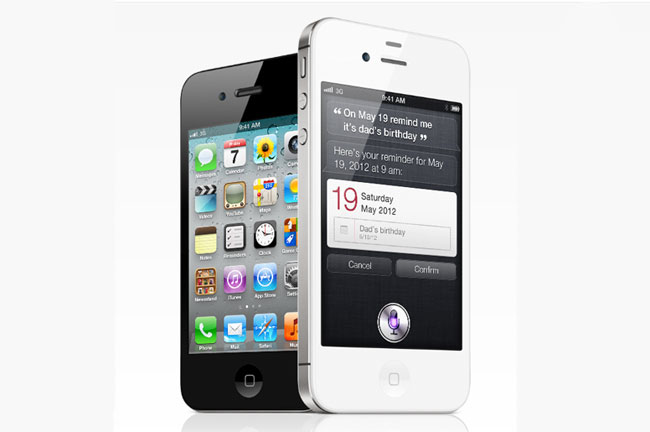
While Apple had been releasing new iPhones in the summer season, things changed with the introduction of the iPhone 4S. This was the first iPhone that Apple announced and began selling in the fall, which is a trend that Apple continues to this day. Though the iPhone 4S launched in October 2011, Apple then moved to September launches for later iPhones, with a few exceptions.
The iPhone 4S took things a step further for mobile iPhone photographers by adding an 8MP camera that would set the standard for several more years. It also added 1080p video recording, which was a big milestone. And since the higher megapixel count and 1080p videos would mean bigger file sizes, Apple also bumped the maximum storage to 64GB.
The iPhone 4S was significant because this was the first iPhone with Apple’s digital assistant, Siri (that’s what the “S” stands for in “4S”). Users could ask Siri to perform various tasks just by using their voice.
The iPhone 4S also coincided with Apple’s launch of iCloud, which is Apple’s in-house cloud storage solution. It gives everyone 5GB of storage for free, which ironically, has not changed in over a decade, despite larger file sizes from photos and video, as well as cloud backups.
The iPhone 4S also launched on Sprint, further expanding the network choices for buyers.
iPhone 5 (September 2012)

Like the iPhone 4 before it, the iPhone 5 also introduced some major changes. With the iPhone 5, we got a larger, 4-inch screen, LTE connectivity, and an HD front-facing FaceTime camera.
This was also when Apple switched from the old 30-pin charging port to the Lightning connector, which became standard for iPhones for the next 10 years.
The iPhone 5 also introduced a new aluminum design that was incredibly lightweight and comfortable to hold. This design would end up being a favorite for many fans, including myself. However, the space gray version was prone to micro scratches due to the anodized finish on the aluminum.
iPhone 5S and 5C (September 2013)
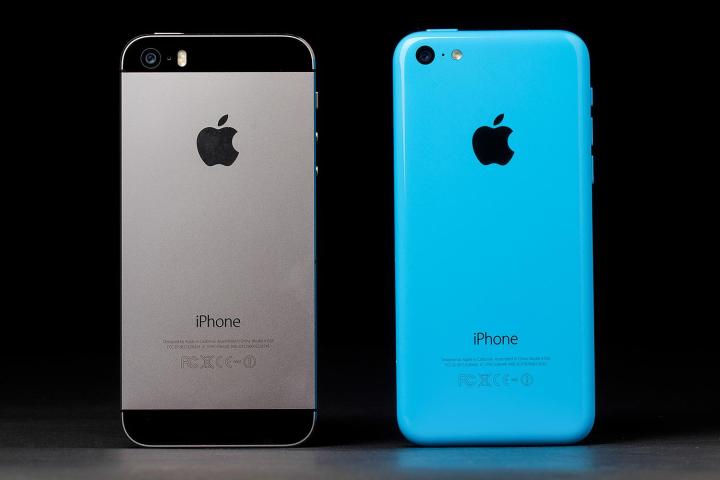
With the iPhone 5S and 5C, Apple introduced two different iPhone models at once for the first time. The iPhone 5S would be the flagship and main star of the show, while the iPhone 5C was marketed as a more budget-friendly option that made some compromises to features.
The iPhone 5S was the first iPhone with Touch ID in the Home button, which added another layer of biometric security before one could access their device. It also improved the 8MP camera and included True Tone flash, along with new camera modes for burst photos and slo-mo.
The iPhone 5C was marketed as a more affordable, budget-friendly option, so it did make some compromises. Rather than have the aluminum body like its sibling, the body for the iPhone 5C was entirely made of plastic (it was “beautifully, unapologetically plastic,” as Apple designer Jony Ive put it), and it came in bright and bold colors for the first time ever.
Apple also released a case specifically for the iPhone 5C that featured hole cutouts that allowed the iPhone 5C color to peek through the case.
The iPhone 5C did not include the Touch ID sensor in the Home button. It only had the passcode method to unlock the phone.
iPhone 6 and 6 Plus (September 2014)

This is when Apple began to introduce two different screen sizes for the iPhone. The iPhone 6 had a 4.7-inch display, while the iPhone 6 Plus had a larger 5.5-inch display. The overall design was thinner, with a unibody aluminum body.
However, the thinner body sparked another scandal called “bendgate.” This was because some people discovered that their iPhone 6 chassis would bend if enough pressure was applied, such as when it was kept in a tight back pocket of a pair of pants.
The iPhone 6 and 6 Plus were also the first iPhones to add Apple Pay, a new contactless digital payment method that can be authenticated with the Touch ID fingerprint sensor. Storage was also increased to a max of 128GB.
iPhone 6s and 6s Plus (September 2015)

About a year later, Apple launched the iPhone 6s and 6s Plus. These two phones retained the 4.7-inch and 5.5-inch displays from its predecessor, as well as the overall look and design. But this would be the first time that it launched the Rose Gold color, which was a gorgeous metallic pink. It was a fan favorite for many people, myself included.
Apple also introduced 3D Touch with the iPhone 6s and 6s Plus. With 3D Touch, users could apply pressure on the iPhone display to bring up additional options, such as contextual menus on app icons on the home screen. It seems that 3D Touch was more of a hidden feature, however, as not everyone knew about it, and Apple eventually discontinued the feature years later with the iPhone 11.
Apple upgraded the cameras to 12MP for the first time, a bump up from the previous 8MP camera. The 12MP lens would be the standard until the iPhone 14 Pro launched in 2023.
The iPhone 6s series is also when Live Photos was introduced, which is a combination of a still image and a short video. When a person takes a Live Photo, it captures a couple of seconds before and after the moment the shutter button is pressed. A Live Photo looks like a still image, but when you activate it with a long press, it plays a few seconds of sound and motion.
The iPhone 6s and 6s Plus are also the first iPhones that allowed users to activate Siri at any time with the “Hey Siri” command instead of just when it was plugged into power.
iPhone SE (March 2016)

The first iPhone SE was an interesting product, and showed that Apple can make a budget-friendly option that doesn’t feel cheap, unlike the iPhone 5C. With the iPhone SE, it combined most of the features and capabilities of the current iPhone 6s lineup into the body of an iPhone 5.
The iPhone SE also defined the idea of the perfect compact iPhone for many people. The 4-inch display made it possible to use one-handed, and you got a 12MP camera, 4K video recording, Live Photos, and “Hey Siri” without needing to be plugged in. It was a great form factor that didn’t compromise on features aside from 3D Touch.
iPhone 7 and 7 Plus (September 2016)
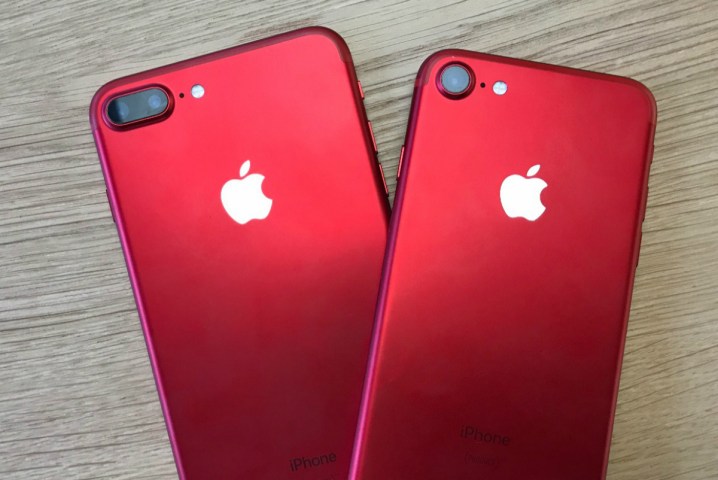
The iPhone 7 and 7 Plus marked a big turning point for the iPhone. The launch of the iPhone 7 line meant the death of the headphone jack, but also saw the first generation of AirPods debut alongside it.
But that wasn’t all. The iPhone 7 and 7 Plus introduced a sleeker design than the iPhone 6s, getting rid of those unsightly antenna strips on the rear. The iPhone 7 and 7 Plus also became the first iPhones with an IP67 water-resistance rating for better durability. Apple also introduced the beautiful and shiny Jet Black color option, which would never be seen again after the iPhone 7.
However, the star of the lineup was the iPhone 7 Plus, as it was the first iPhone to have a dual camera setup with a main camera and a telephoto lens. And thanks to the dual lens, Apple introduced Portrait mode. To keep up with the camera improvements, maximum storage was also increased to 256GB.
Again, the iPhone 7 and 7 Plus were a turning point for mobile photography by adding Portrait mode. This lets people take professional-looking portraits that replicate what you get when using a DSLR camera, but now you could do it with your iPhone. After this, Portrait mode became incredibly popular and standard on every smartphone.
iPhone 8 and 8 Plus (September 2017)
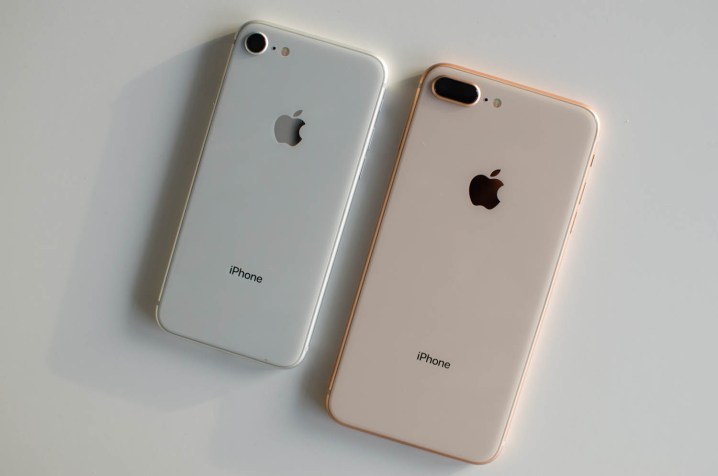
The iPhone 8 and 8 Plus were interesting devices, as they signaled the end of the Home button era for mainline iPhones. Apple brought a new glass and aluminum design, though the form factor was similar to its predecessor. This new body allowed for wireless charging for the very first time on an iPhone.
One of the bigger features that the iPhone 8 added was Portrait Lighting. This lets users change the lighting style for Portrait mode images, making them look even more professional. The iPhone 8 was also the first iPhone to support augmented reality (AR) in apps and games, which brought a whole new experience to mobile.
The iPhone 8 and 8 Plus also launched around the same time as the iPhone X, which ushered in a new era for the iPhone. However, the iPhone 8 body has been recycled for future iPhone SE models.
iPhone X (November 2017)
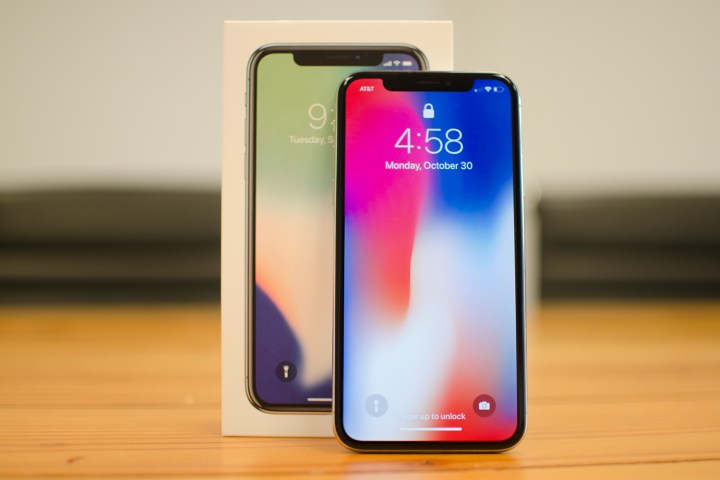
To signify a decade of iPhone, the iPhone X was a special edition to celebrate the occasion.
It also introduced the next era of the iPhone by removing the Home button and Touch ID sensor in favor of a new biometric form of security called Face ID. Rather than use your fingerprint to unlock your phone, all it needs to do is scan your face.
Since Apple removed the Home button, that meant the iPhone X was the first iPhone to have a 5.8-inch full-screen design, and it introduced the notch that people either loved or hated for years to come. This is also the first iPhone with an OLED Super Retina display.
The iPhone X was definitely a milestone in the history of the iPhone. For a decade, we’d been used to an iPhone with a Home button, but the iPhone X completely changed that and established a new iconic look. And we barely have Touch ID anymore except on a few select devices these days.
iPhone XS and XS Max (September 2018)
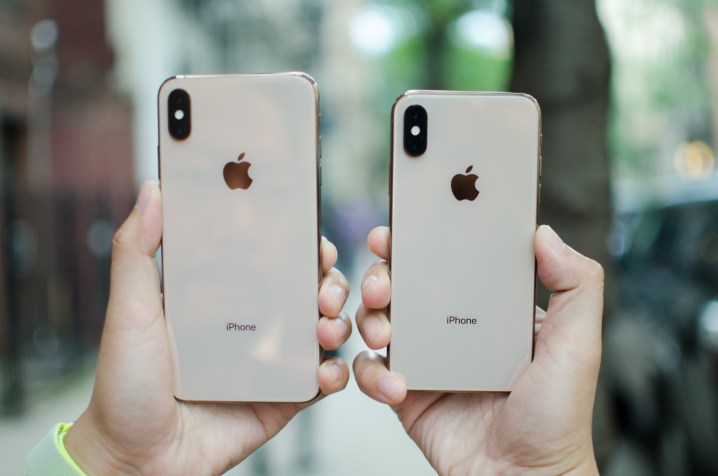
With the iPhone XS and XS Max, Apple finally eliminated the Home button from the flagship devices. Apple also brought back a larger form factor with the Max moniker, and introduced a 6.5-inch display, making the iPhone XS Max the largest iPhone yet at the time. The regular iPhone XS still retained the 5.8-inch display from its predecessor.
Other improvements with the iPhone XS and XS Max were faster Face ID, better water resistance with an IP68 rating, and dual SIM support for the first time, as it added support for eSIM alongside the physical nano SIM card slot. The iPhone XS and XS Max also could handle Gigabit LTE for even faster download speeds. And the maximum storage tier went up to 512GB.
The iPhone XS and XS Max are significant as they set the new precedent for two sizes of full-screen iPhones going forward. The XS Max is also the first “Max” iPhone.
iPhone XR (October 2018)
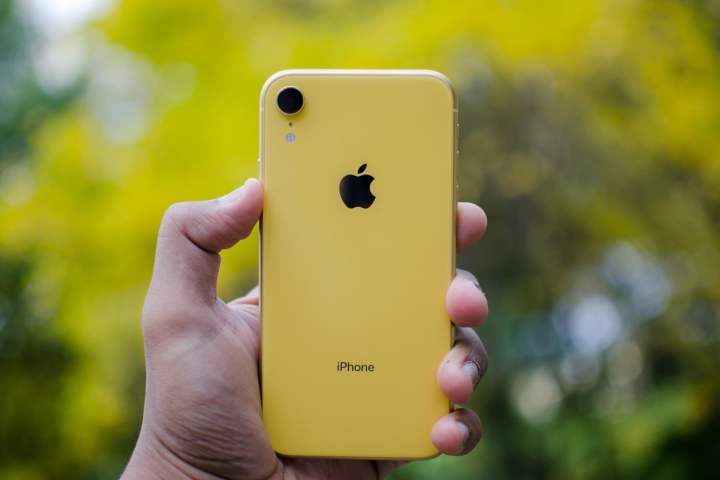
The iPhone XR was a one-off that launched with the iPhone XS and XS Max. It was designed to be a cheaper version of the XS and XS Max.
Despite the iPhone XR having a larger screen than the iPhone XS at 6.1 inches, it was only a Liquid Retina LCD display rather than OLED like the flagship models. It also only had a single rear camera, as well as a slightly lower IP67 water-resistance rating compared to the IP68 on the XS and XS Max. The iPhone XR also came in six vibrant colors, and the cheaper price point appealed to people who were on a tighter budget.
The iPhone XR didn’t do anything groundbreaking, but it was the first iPhone that had the 6.1-inch display size that has become the norm for the iPhone in the past few years. And while it wasn’t a major flagship phone, the budget-friendly price point helped boost it to be one of the most popular smartphones in 2019.
iPhone 11 series (September 2019)
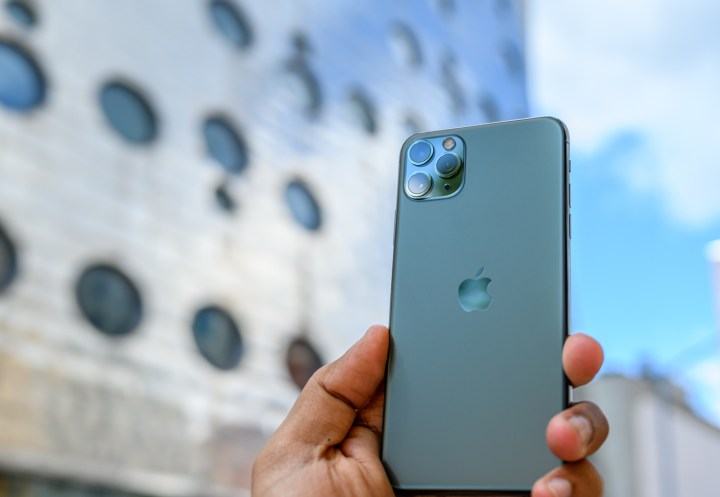
The iPhone 11 series included the iPhone 11, iPhone 11 Pro, and iPhone 11 Pro Max. This is the first time that Apple has introduced three iPhone models together at the same time ( the iPhone 8/X and iPhone XS/XR were a month apart), and it set the new standard of a standard iPhone, a Pro model, and a larger Pro Max.
This is also the first time that Apple included an ultrawide lens on all models, as well as the new U1 chip with ultra-wideband technology.
Furthermore, the iPhone 11 Pro and Pro Max were the first to have triple camera setups with a main, ultrawide, and telephoto lens. Apple also upgraded the displays to Super Retina XDR OLED displays and improved battery life.
The iPhone 11 Pro models set the stage for the next several years of iPhones to come. Though the cameras have continued to get larger over the years, even current iPhones still have that same triple-lens camera layout that debuted with the iPhone 11 Pro.
iPhone SE 2 (April 2020)
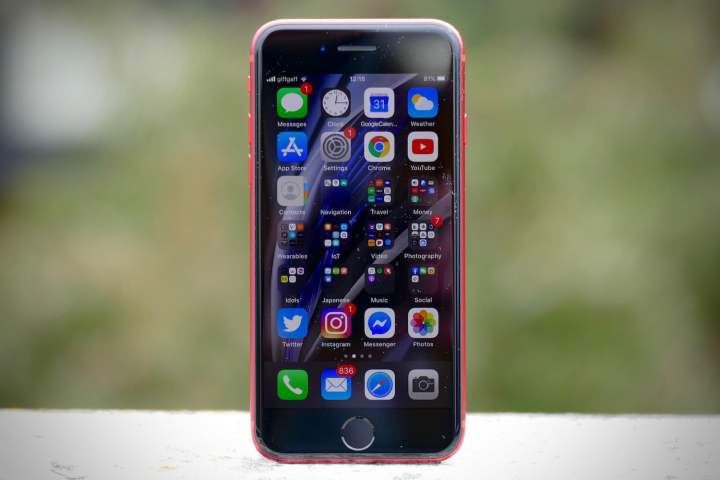
Apple surprised everyone in the middle of an iPhone life cycle by bringing back the iPhone SE, four years after the original, in the form of the iPhone SE 2. While it wasn’t as small and compact as the original, it still appealed to those who prefer small phones, and the hardware wasn’t too shabby either.
The iPhone SE 2 recycled the old chassis of the iPhone 8 while still using the A13 chip that was inside the iPhone 11 series. With the 4.7-inch screen, the iPhone SE 2 brought back the Home button and Touch ID for those who preferred it.
In 2020, the iPhone SE 2 provided an excellent value. It was the most affordable iPhone one could buy, and despite looking like the old iPhone 8, the iPhone SE 2 had more capabilities like Portrait mode with a single lens camera.
iPhone 12 series (October 2020)

The iPhone 12 series was the first time Apple introduced four iPhones at the same time with three different sizes: the iPhone 12 mini, iPhone 12, iPhone 12 Pro, and iPhone 12 Pro Max. The iPhone 12 mini, in particular, was unique because it was the smallest and most compact iPhone that Apple offered — offering a 5.4-inch display that still had the full-screen design of the rest of the iPhone 12 lineup.
Apple equipped the iPhone 12 mini and iPhone 12 with dual rear cameras, but once again offered a triple camera system for the iPhone 12 Pro and iPhone 12 Pro Max. Apple also debuted Ceramic Shield, which is a coating on the front glass to make it more shatter-resistant. The Pro models also added lidar for better augmented reality experiences.
The entire iPhone 12 lineup was a big deal, however. These were the first iPhones to have 5G support, and introduced Apple’s proprietary MagSafe magnetic wireless charging and accessory ecosystem. With 2G/EDGE networks already put to pasture by most carriers and 3G soon to followit into obscurity, having 5G support was crucial, as it coexists with 4G/LTE and will be around for a long time. MagSafe also opened up a whole new world of creative accessories and is also a major influence on the new Qi2 wireless charging standard.
But the iPhone 12 series also removed the in-box charger. Apple began only providing the charging cable, so people would have to either use their previous charger or buy a new one. Other brands mostly followed suit.
iPhone 13 series (September 2021)
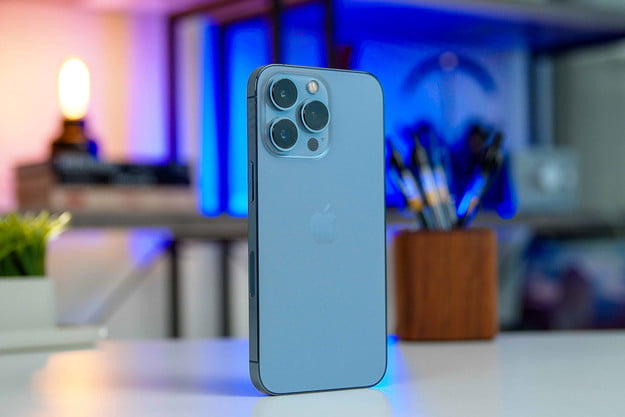
For the most part, the iPhone 13 line was very similar to the iPhone 12 before it. We got four models: the iPhone 13 mini, iPhone 13, iPhone 13 Pro, and iPhone 13 Pro Max. The biggest differences were the new colors and a smaller notch.
But the iPhone 13 lineup did bring some other notable changes, including the A15 Bionic chip that gave a big boost to overall battery life. Cinematic video mode also launched with the iPhone 13 line, giving videos a depth effect that changed focus automatically, depending on what was going on in the scene.
The iPhone 13 Pro and iPhone 13 Pro Max were also the first iPhones to get the 120Hz ProMotion display, which set the standard for future Pro models to come. With the higher adaptive refresh rate, scrolling and animations are smoother than ever. Though it’s not as drastic of a change as when Apple introduced the Retina display on the iPhone 4, it is still noticeable when you compare the iPhone 13 and iPhone 13 Pro side by side.
The iPhone 13 Pro was also the first iPhone to go up to 1TB in storage capacity.
iPhone SE 3 (March 2022)

Apple delivered an iPhone SE 3 in 2022, but it was less impressive than when the second generation of the device launched. It still had the iPhone 8 body with a 4.7-inch display and the Home button with Touch ID.
However, this time around, Apple stuffed it with the A15 Bionic chip, which was the same as the iPhone 13 line. It also added 5G connectivity support, which means it should be future-proof for a good while. Battery life was also a bit better than before.
Otherwise, not much else changed. It’s unclear if there will be an iPhone SE 4, but we hope to see an updated design — the iPhone 8 body is very outdated these days.
iPhone 14 Series (September 2022)

Though the iPhone 14 series continued the tradition of four iPhone models, Apple eliminated the mini from the lineup and replaced it with the new Plus offering, which is the same size as the Pro Max. The reasoning for getting rid of the mini was due to poor sales performance, and Apple believed more people would be interested in a Plus model over a mini.
For the most part, the standard iPhone 14 and iPhone 14 Plus brought over features from the iPhone 13, including the A15 Bionic. But the biggest upgrades came in the iPhone 14 Pro and iPhone 14 Pro Max with the Dynamic Island, which replaced the notch that debuted with the iPhone X, and a bump to the cameras to 48MP from 12MP. This was also the first iPhone with an always-on display.
The entire iPhone 14 line also got the new Crash Detection and Emergency SOS via Satellite features aimed at saving lives. The iPhone 14 series is also the first iPhone in the U.S. to eliminate physical SIM card trays and switch exclusively to eSIM.
While the standard iPhone 14 and iPhone 14 Plus were iterative upgrades, the iPhone 14 Pro and Pro Max would play a major part in influencing the future direction of the iPhone. The Dynamic Island would eventually make its way to all iPhone models, getting rid of the ugly notch, and the 48MP would become the new baseline.
iPhone 15 Series (September 2023)
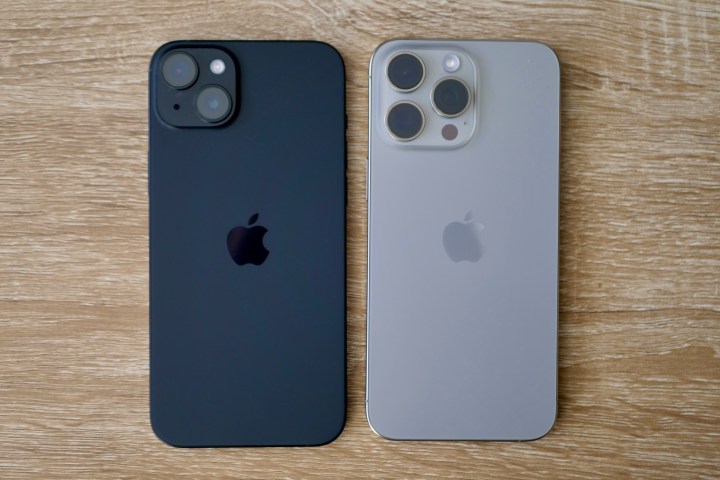
The iPhone 15 line has brought some of the biggest changes in the history of the iPhone yet. The base model iPhone 15 and iPhone 15 Plus both get a big camera boost to 48MP, like the iPhone 14 Pro did last year, and they dumped the notch for the Dynamic Island.
The iPhone 15 Pro and iPhone 15 Pro Max got even bigger upgrades with the new titanium frame instead of stainless steel, the A17 Pro chip, and the new 5x telephoto lens on the Pro Max. Apple also got rid of the classic silent/ring toggle and replaced it with a new Action button, similar to that found on the Apple Watch Ultra, which users can map to different functions as they see fit.
But the biggest change, and the one that the entire iPhone 15 lineup will probably be remembered for, is the fact that it replaced the proprietary Lightning charging port with USB-C. Lightning had been around since the iPhone 5 in 2012, so the cable that everyone had been using for the past decade was finally dead.
Apple dropping its own proprietary charger, which it made a lot of money from licensing out, for a more universal option is a very big deal. Plus, it opened up a whole new world of USB-C accessories that were previously incompatible.
And there’s no doubt that the switch to titanium will have an impact on future iPhones and even the competition. Other brands have already begun to copy the titanium design, such as the OnePlus Open and even the Samsung Galaxy S24 Ultra.
iPhone 16 series (September 2024)

Following up on the iPhone 15, the iPhone 16 line takes it up another notch.
The iPhone 16 and iPhone 16 Plus retain the same display sizes at 6.1 and 6.7 inches and 60Hz refresh rate. However, the brightness now goes up to 2,000 nits for peak brightness outdoors.
There is also a redesigned camera layout with a vertical pill-shaped module, which is like a hybrid between the one on the iPhone XS and iPhone 12. Apple also replaced the silent/ring toggle with the Action button that debuted on the iPhone 15 Pro. On the inside, Apple gave the base model iPhone 16 a nice performance boost with the A18 chip. And this time, Apple gave the iPhone 16 line some of the best color options we’ve seen in a long time.

The iPhone 16 Pro and iPhone 16 Pro Max got slightly bigger this time, going with 6.3 and 6.9 inches for the displays. The smaller iPhone 16 Pro also has a better telephoto camera than its predecessor, which means it can do 5x optical zoom, making it on par with the iPhone 16 Pro Max. The ultrawide lens also got a spec jump to 48MP to go along with the 48MP primary camera, but the telephoto remains the same at 12MP.
A new feature across the entire iPhone 16 lineup is the Camera Control. This is a physical button that can be pressed to launch the camera app and also act as a shutter button. It even features touch detection, so it can detect sliding gestures on it to adjust camera settings. Third-party developers can also make their app work with the Camera Control. With this new button, the iPhone 16 feels more like an actual camera than ever before — making it a big win for mobile photographers.
-

 Womens Workouts4 days ago
Womens Workouts4 days ago3 Day Full Body Women’s Dumbbell Only Workout
-

 News5 days ago
News5 days agoOur millionaire neighbour blocks us from using public footpath & screams at us in street.. it’s like living in a WARZONE – WordupNews
-

 News1 week ago
News1 week agoYou’re a Hypocrite, And So Am I
-

 Technology1 week ago
Technology1 week agoWould-be reality TV contestants ‘not looking real’
-

 Sport1 week ago
Sport1 week agoJoshua vs Dubois: Chris Eubank Jr says ‘AJ’ could beat Tyson Fury and any other heavyweight in the world
-

 Science & Environment1 week ago
Science & Environment1 week agoITER: Is the world’s biggest fusion experiment dead after new delay to 2035?
-

 Science & Environment1 week ago
Science & Environment1 week agoMaxwell’s demon charges quantum batteries inside of a quantum computer
-

 Science & Environment1 week ago
Science & Environment1 week agoHow to wrap your mind around the real multiverse
-

 Science & Environment1 week ago
Science & Environment1 week agoLiquid crystals could improve quantum communication devices
-

 Science & Environment1 week ago
Science & Environment1 week agoPhysicists are grappling with their own reproducibility crisis
-

 Science & Environment1 week ago
Science & Environment1 week agoSunlight-trapping device can generate temperatures over 1000°C
-

 Science & Environment1 week ago
Science & Environment1 week agoHyperelastic gel is one of the stretchiest materials known to science
-

 Science & Environment1 week ago
Science & Environment1 week ago‘Running of the bulls’ festival crowds move like charged particles
-

 Science & Environment1 week ago
Science & Environment1 week agoHow to unsnarl a tangle of threads, according to physics
-

 Science & Environment1 week ago
Science & Environment1 week agoQuantum ‘supersolid’ matter stirred using magnets
-

 Science & Environment1 week ago
Science & Environment1 week agoWhy this is a golden age for life to thrive across the universe
-

 CryptoCurrency1 week ago
CryptoCurrency1 week agoCardano founder to meet Argentina president Javier Milei
-

 News1 week ago
News1 week agoIsrael strikes Lebanese targets as Hizbollah chief warns of ‘red lines’ crossed
-

 CryptoCurrency1 week ago
CryptoCurrency1 week agoDZ Bank partners with Boerse Stuttgart for crypto trading
-

 CryptoCurrency1 week ago
CryptoCurrency1 week agoEthereum is a 'contrarian bet' into 2025, says Bitwise exec
-

 Womens Workouts6 days ago
Womens Workouts6 days agoBest Exercises if You Want to Build a Great Physique
-

 Womens Workouts6 days ago
Womens Workouts6 days agoEverything a Beginner Needs to Know About Squatting
-

 Science & Environment5 days ago
Science & Environment5 days agoMeet the world's first female male model | 7.30
-

 Science & Environment1 week ago
Science & Environment1 week agoCaroline Ellison aims to duck prison sentence for role in FTX collapse
-

 CryptoCurrency1 week ago
CryptoCurrency1 week agoBitcoin miners steamrolled after electricity thefts, exchange ‘closure’ scam: Asia Express
-

 Science & Environment1 week ago
Science & Environment1 week agoQuantum forces used to automatically assemble tiny device
-

 Science & Environment1 week ago
Science & Environment1 week agoNuclear fusion experiment overcomes two key operating hurdles
-

 CryptoCurrency1 week ago
CryptoCurrency1 week agoDorsey’s ‘marketplace of algorithms’ could fix social media… so why hasn’t it?
-

 CryptoCurrency1 week ago
CryptoCurrency1 week agoRedStone integrates first oracle price feeds on TON blockchain
-

 CryptoCurrency1 week ago
CryptoCurrency1 week agoBitcoin bulls target $64K BTC price hurdle as US stocks eye new record
-

 CryptoCurrency1 week ago
CryptoCurrency1 week agoCoinbase’s cbBTC surges to third-largest wrapped BTC token in just one week
-

 News1 week ago
News1 week agoBrian Tyree Henry on voicing young Megatron, his love for villain roles
-

 News5 days ago
News5 days agoFour dead & 18 injured in horror mass shooting with victims ‘caught in crossfire’ as cops hunt multiple gunmen
-

 Science & Environment1 week ago
Science & Environment1 week agoNerve fibres in the brain could generate quantum entanglement
-

 Science & Environment1 week ago
Science & Environment1 week agoTime travel sci-fi novel is a rip-roaringly good thought experiment
-

 Science & Environment1 week ago
Science & Environment1 week agoLaser helps turn an electron into a coil of mass and charge
-

 CryptoCurrency1 week ago
CryptoCurrency1 week agoCrypto scammers orchestrate massive hack on X but barely made $8K
-

 CryptoCurrency1 week ago
CryptoCurrency1 week agoLow users, sex predators kill Korean metaverses, 3AC sues Terra: Asia Express
-

 CryptoCurrency1 week ago
CryptoCurrency1 week ago‘No matter how bad it gets, there’s a lot going on with NFTs’: 24 Hours of Art, NFT Creator
-

 CryptoCurrency1 week ago
CryptoCurrency1 week agoSEC asks court for four months to produce documents for Coinbase
-

 CryptoCurrency1 week ago
CryptoCurrency1 week agoBlockdaemon mulls 2026 IPO: Report
-

 Sport1 week ago
Sport1 week agoUFC Edmonton fight card revealed, including Brandon Moreno vs. Amir Albazi headliner
-
Business1 week ago
How Labour donor’s largesse tarnished government’s squeaky clean image
-

 Technology1 week ago
Technology1 week agoiPhone 15 Pro Max Camera Review: Depth and Reach
-

 Womens Workouts7 days ago
Womens Workouts7 days agoKeep Your Goals on Track This Season
-

 Womens Workouts4 days ago
Womens Workouts4 days ago3 Day Full Body Toning Workout for Women
-

 Travel3 days ago
Travel3 days agoDelta signs codeshare agreement with SAS
-

 CryptoCurrency1 week ago
CryptoCurrency1 week ago$12.1M fraud suspect with ‘new face’ arrested, crypto scam boiler rooms busted: Asia Express
-

 CryptoCurrency1 week ago
CryptoCurrency1 week agoCertiK Ventures discloses $45M investment plan to boost Web3
-

 CryptoCurrency1 week ago
CryptoCurrency1 week agoBeat crypto airdrop bots, Illuvium’s new features coming, PGA Tour Rise: Web3 Gamer
-

 CryptoCurrency1 week ago
CryptoCurrency1 week agoTelegram bot Banana Gun’s users drained of over $1.9M
-

 Science & Environment1 week ago
Science & Environment1 week agoWhy we need to invoke philosophy to judge bizarre concepts in science
-

 Science & Environment1 week ago
Science & Environment1 week agoHow do you recycle a nuclear fusion reactor? We’re about to find out
-

 News1 week ago
News1 week agoChurch same-sex split affecting bishop appointments
-

 CryptoCurrency1 week ago
CryptoCurrency1 week ago‘Silly’ to shade Ethereum, the ‘Microsoft of blockchains’ — Bitwise exec
-

 Technology1 week ago
Technology1 week agoFivetran targets data security by adding Hybrid Deployment
-
Business1 week ago
Thames Water seeks extension on debt terms to avoid renationalisation
-
Politics1 week ago
‘Appalling’ rows over Sue Gray must stop, senior ministers say | Sue Gray
-

 News1 week ago
News1 week agoBrian Tyree Henry on voicing young Megatron, his love for villain roles
-

 Womens Workouts7 days ago
Womens Workouts7 days agoHow Heat Affects Your Body During Exercise
-

 News5 days ago
News5 days agoWhy Is Everyone Excited About These Smart Insoles?
-

 Health & fitness1 week ago
Health & fitness1 week agoThe secret to a six pack – and how to keep your washboard abs in 2022
-

 News1 week ago
News1 week ago▶️ Media Bias: How They Spin Attack on Hezbollah and Ignore the Reality
-

 CryptoCurrency1 week ago
CryptoCurrency1 week ago2 auditors miss $27M Penpie flaw, Pythia’s ‘claim rewards’ bug: Crypto-Sec
-

 CryptoCurrency1 week ago
CryptoCurrency1 week agoLouisiana takes first crypto payment over Bitcoin Lightning
-

 CryptoCurrency1 week ago
CryptoCurrency1 week agoJourneys: Robby Yung on Animoca’s Web3 investments, TON and the Mocaverse
-

 Science & Environment1 week ago
Science & Environment1 week agoQuantum time travel: The experiment to ‘send a particle into the past’
-

 CryptoCurrency1 week ago
CryptoCurrency1 week ago‘Everything feels like it’s going to shit’: Peter McCormack reveals new podcast
-

 CryptoCurrency1 week ago
CryptoCurrency1 week agoSEC sues ‘fake’ crypto exchanges in first action on pig butchering scams
-

 CryptoCurrency1 week ago
CryptoCurrency1 week agoDecentraland X account hacked, phishing scam targets MANA airdrop
-

 CryptoCurrency1 week ago
CryptoCurrency1 week agoBitcoin price hits $62.6K as Fed 'crisis' move sparks US stocks warning
-

 Science & Environment1 week ago
Science & Environment1 week agoBeing in two places at once could make a quantum battery charge faster
-

 CryptoCurrency1 week ago
CryptoCurrency1 week agoVonMises bought 60 CryptoPunks in a month before the price spiked: NFT Collector
-

 Science & Environment1 week ago
Science & Environment1 week agoHow one theory ties together everything we know about the universe
-

 Science & Environment1 week ago
Science & Environment1 week agoUK spurns European invitation to join ITER nuclear fusion project
-

 Science & Environment1 week ago
Science & Environment1 week agoTiny magnet could help measure gravity on the quantum scale
-

 CryptoCurrency1 week ago
CryptoCurrency1 week agoVitalik tells Ethereum L2s ‘Stage 1 or GTFO’ — Who makes the cut?
-

 CryptoCurrency1 week ago
CryptoCurrency1 week agoEthereum falls to new 42-month low vs. Bitcoin — Bottom or more pain ahead?
-

 News1 week ago
News1 week agoBrian Tyree Henry on his love for playing villains ahead of “Transformers One” release
-

 Womens Workouts7 days ago
Womens Workouts7 days agoWhich Squat Load Position is Right For You?
-

 News6 days ago
News6 days agoBangladesh Holds the World Accountable to Secure Climate Justice
-

 Politics1 week ago
Politics1 week agoTrump says he will meet with Indian Prime Minister Narendra Modi next week
-

 Technology1 week ago
Technology1 week agoCan technology fix the ‘broken’ concert ticketing system?
-

 Health & fitness1 week ago
Health & fitness1 week agoThe maps that could hold the secret to curing cancer
-

 CryptoCurrency1 week ago
CryptoCurrency1 week agoHelp! My parents are addicted to Pi Network crypto tapper
-

 CryptoCurrency1 week ago
CryptoCurrency1 week agoCZ and Binance face new lawsuit, RFK Jr suspends campaign, and more: Hodler’s Digest Aug. 18 – 24
-

 Science & Environment1 week ago
Science & Environment1 week agoA new kind of experiment at the Large Hadron Collider could unravel quantum reality
-

 Science & Environment1 week ago
Science & Environment1 week agoSingle atoms captured morphing into quantum waves in startling image
-

 Science & Environment1 week ago
Science & Environment1 week agoFuture of fusion: How the UK’s JET reactor paved the way for ITER
-

 Fashion Models1 week ago
Fashion Models1 week agoMixte
-

 Politics1 week ago
Politics1 week agoLabour MP urges UK government to nationalise Grangemouth refinery
-

 Money1 week ago
Money1 week agoBritain’s ultra-wealthy exit ahead of proposed non-dom tax changes
-

 Womens Workouts7 days ago
Womens Workouts7 days agoWhere is the Science Today?
-

 Womens Workouts7 days ago
Womens Workouts7 days agoSwimming into Your Fitness Routine
-

 News1 week ago
News1 week agoBrain changes during pregnancy revealed in detailed map
-

 Science & Environment1 week ago
Science & Environment1 week agoA slight curve helps rocks make the biggest splash
-

 News1 week ago
News1 week agoRoad rage suspects in custody after gunshots, drivers ramming vehicles near Boise
-

 Science & Environment1 week ago
Science & Environment1 week agoHow Peter Higgs revealed the forces that hold the universe together
-

 Science & Environment1 week ago
Science & Environment1 week agoA tale of two mysteries: ghostly neutrinos and the proton decay puzzle
-

 Politics1 week ago
Politics1 week agoLib Dems aim to turn election success into influence


You must be logged in to post a comment Login